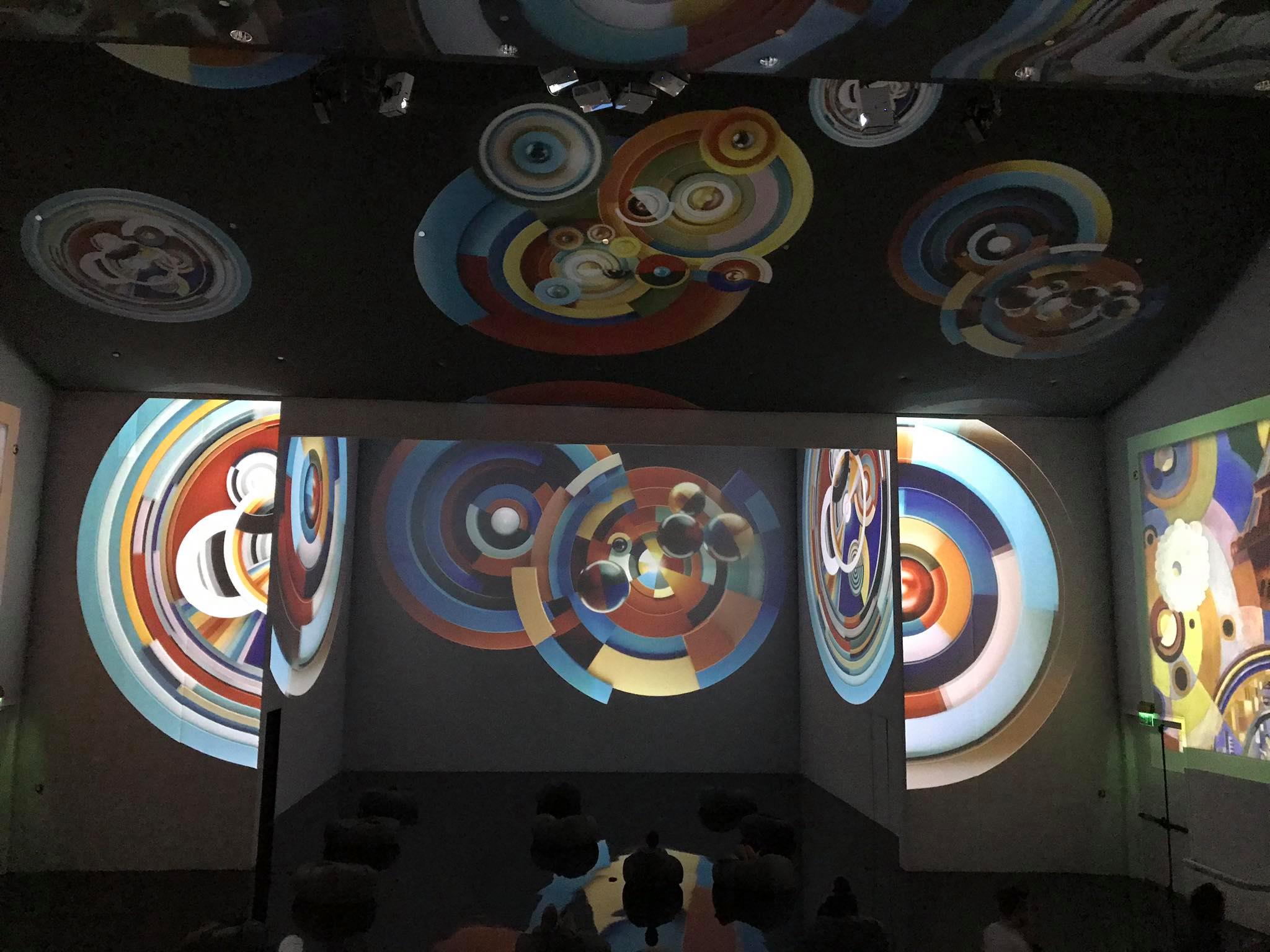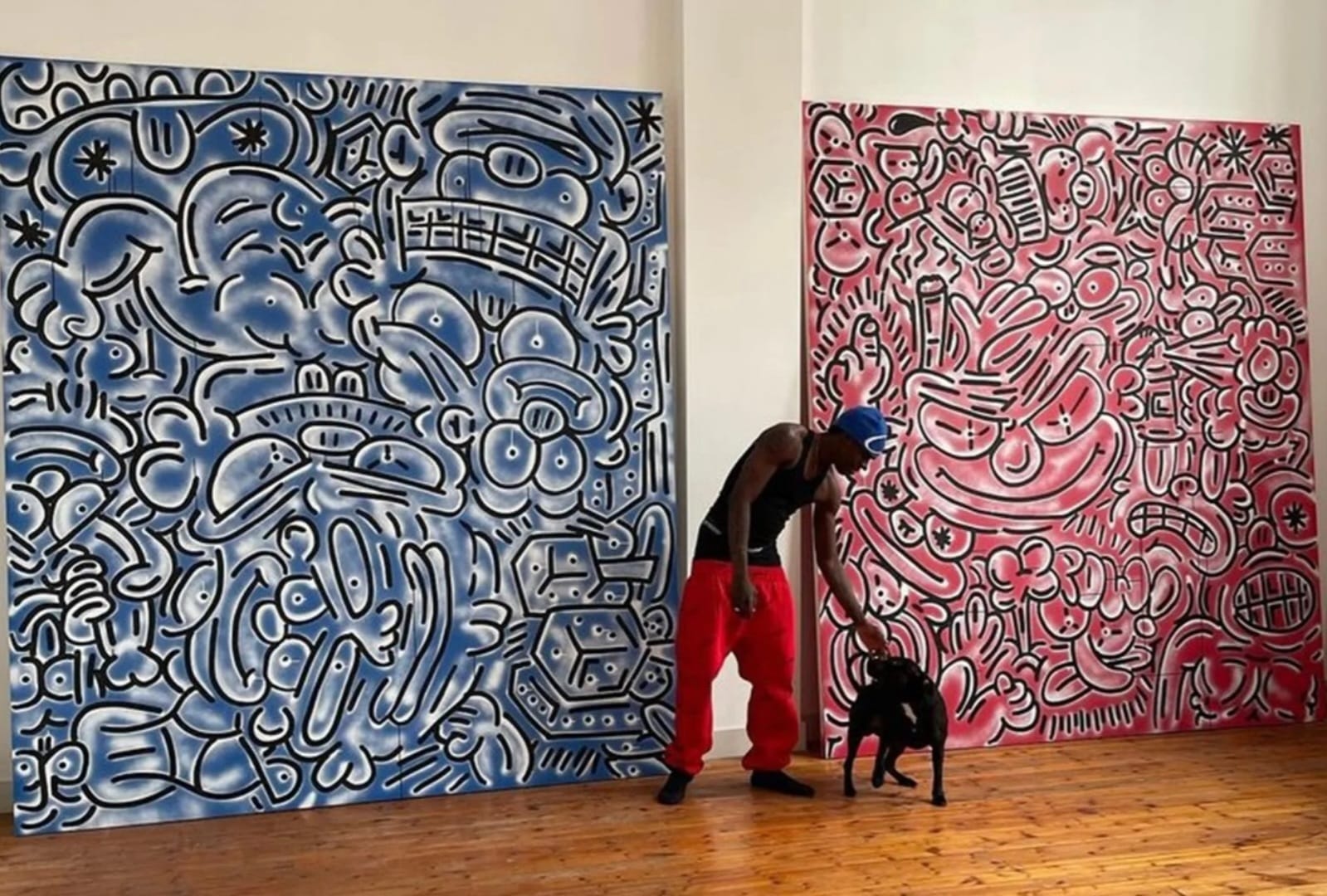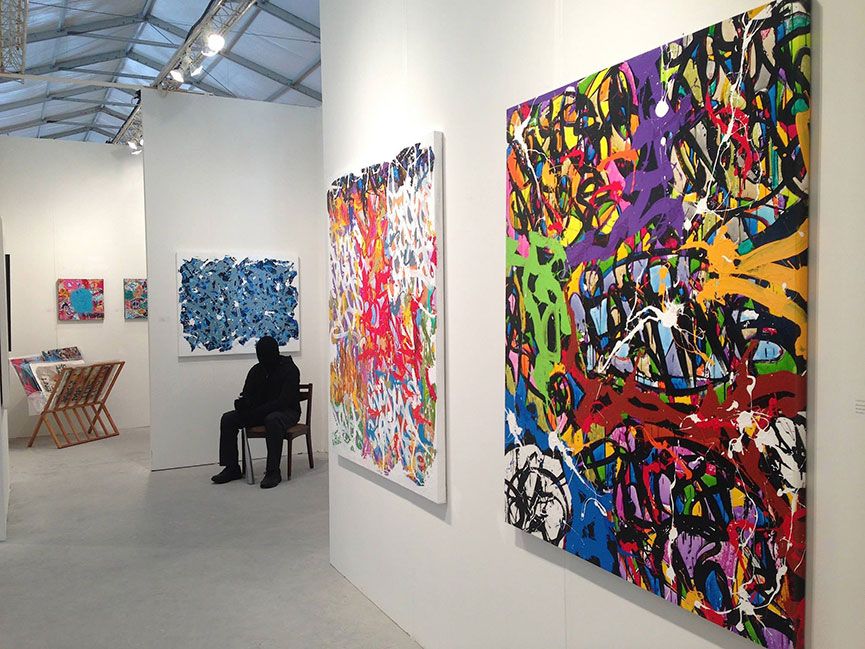The museum was founded by entrepreneur, philanthropist, and collector Nurlan Smagulov, whose remarkable collection of over 700 artworks from Kazakhstan, Central Asia, and beyond is on display and will ultimately be gifted to the city. Situated in its heart, the 10,060 m² museum – designed by British architects Chapman Taylor – embodies the city’s striking contrast between its mountainous backdrop and urban environment.

Smagulov comments: “Art has had a profound impact on my life, and it is my hope that the Almaty Museum of Arts offers the same sense of inspiration and connection to others. The positive responses from our first visitors affirm the importance of creating a space that both honours the cultural heritage of our region and fosters dialogue about its future. I am deeply encouraged by this reception and look forward to seeing the museum grow as a place of learning, reflection, and celebration.”

The museum launches with a bold and timely programme that reflects its dual mission: to spotlight the region’s distinctive artistic voices while engaging in global cultural dialogue. The programme is led by Artistic Director, Meruyert Kaliyeva and Chief Curator, Inga Lāce.
Kaliyeva comments: “Our vision is to spark curiosity, dialogue, and global engagement with the cultural wealth of Central Asia. This inaugural programme brings together artists across generations – those who laid the foundations of modern art in the region and courageously began asking questions about national identity at a time when such inquiries could lead to persecution under the Soviet regime, and those who are redefining its future today. By grounding the museum in local histories while embracing global perspectives, we hope to build a space where art can be both a reflection and a catalyst for change. The overwhelmingly positive response to our opening affirms the importance of this mission and encourages us to continue building a platform for exchange, reflection, and inspiration.”

Inaugural Exhibitions and Events
“I Understand Everything” – Almagul Menlibayeva (12 September 2025 – May 2026)
This is the first retrospective of the ground-breaking artist Almagul Menlibayeva (b. 1969 in Almaty). Spanning almost four decades, the exhibition traces her trajectory from early textiles, painting and printmaking to performance, photography, video and her latest AI experiments.
Her work draws on myths, memories and symbolic geographies of Eurasia, creating what she calls a personal and political “cosmology” that confronts questions of identity, resilience and cultural renewal. By connecting these to contemporary realities, Menlibayeva dissolves boundaries of time and place. Her retrospective highlights not only the wounds of history but also the possibilities of imagining resilient futures.

Curated by Gridthiya Gaweewong (Artistic Director of Jim Thompson Art Center in Bangkok), the exhibition is structured in two chapters. Menlibayeva’s early paintings and works on paper remain as a constant thread, while each chapter introduces a distinct selection of video and photographic works.
Chapter I (September 2025 – January 2026) revisits landscapes such as the steppe, the Aral Sea, and the Semipalatinsk nuclear test zone, culminating in the multi-channel installation Kurchatov 22.
Chapter II (from February 2026) broadens the scope to Kazakhstan’s geopolitical terrains and sites of memory, featuring works on Stalin-era labour camps and women’s agency along the Silk Road.
Together, they trace symbolic geographies, myths, and memories of Eurasia.
“Qonaqtar” – An Exhibition from the Collection of the Almaty Museum of Arts (From 12 September 2025)
Curated by Chief Curator Inga Lāce, Qonaqtar—meaning “guests” in Kazakh—draws from the museum’s collection to explore the traditions and tensions of hospitality and migration in Central Asia. Anchored by works such as Aisha Galymbayeva’s Shepherd’s Feast (1965) and Salikhitdin Aitbayev’s On the Virgin Lands. Lunchtime (1960s), the exhibition brings together modernist icons and contemporary voices like Yerbossyn Meldibekov and Saodat Ismailova, unpacking questions of identity, displacement, and belonging.

Spanning works from the 1940s to today, with a focus on the generation of Sixtiers who forged a modern visual language under Soviet constraints, the exhibition brings together painting, graphic works, sculpture, and contemporary practice. It also highlights landscape, cosmology, language, role of women in society, and transnational solidarity, offering a vivid reflection on resilience and cultural identity.
Lāce expands: “It is significant that this remarkable collection is now accessible to the public. The artworks trace how artists forged a modern Kazakh identity, weaving together folklore, nomadic traditions, everyday rituals, and modernist aesthetics, all while navigating Soviet constraints and the deep heritage of Central Asia… As I explored the collection, I was struck by recurring images of gatherings, food and the landscape of the steppe and wondered what lay beyond these seemingly idyllic scenes?”

Live Programme
Giving visitors a first taste of the regular events and performance programme, the opening week also features a rich programme of performance art, film, talks, and communal gatherings curated by Armenian-born independent curator Anne Davidian. Inspired by Central Asia’s oral and musical traditions, the programme activates the museum’s architectural spaces and bustling location on Al-Farabi Avenue — named after philosopher Abu Nasr Al-Farabi, author of The Great Book of Music.
The permanent collection:
- The Almaty Museum of Arts’ collection comprises works by Kazakh modern artists Toqbolat Togyzbayev, Maktum Qisamedin, and Shaimardan Sariyev. They are complemented by works of pioneering contemporary artists such as Rustam Khalfin, Sergei Maslov, Saule Suleimenova, and Said Atabekov. The growing Central Asian contemporary art collection includes pieces by artists such as Dilyara Kaipova from Uzbekistan and Chingiz Aidarov from Kyrgyzstan. International dialogues within the collection are fostered by artists such as Khadim Ali, Xu Zhen, and Jadé Fadojutimi, among others.

Artist Rooms
Almaty Museum of Arts is proud to offer immersive encounters with works from the museum’s collection by Richard Serra, Anselm Kiefer, Yayoi Kusama, and Bill Viola. Designed for long-term display, these rooms offer an intimate encounter with the groundbreaking creations of these renowned artists, highlighting their unique approaches to form, material and meaning. Works by these artists are not displayed elsewhere in the region, making this a rare and unparalleled opportunity for audiences to experience them firsthand.

Richard Serra’s Junction (2011), the last large-scale work relocated with his approval before his passing, envelops viewers in curving steel forms that redefine the experience of space.

Anselm Kiefer’s Questi scritti, quando verranno bruciati, daranno finalmente un po’ di luce, (2020-21) is comprised of monumental canvas and meditates on history, ruin, and renewal, resonating deeply with the region’s layered past. Yayoi Kusama’s celebrated Infinity Mirror Room LOVE IS CALLING (2013) invites visitors into an endless universe of light, pattern, and poetry, while Bill Viola’s Stations (1994) offers a spiritual reflection on transformation, inspired in part by Sufi thought.



Outdoor art
Newly commissioned outdoor works commissioned by Almaty Museum of Arts are greeting visitors at the entrances and public plaza.
Berlin-based artist Alicja Kwade debuts Pre-Position (2023), an installation of stone spheres and steel forms inspired by Kazakhstan’s Torysh valley. Evoking celestial systems and ancient astronomical tools, it meditates on time, gravity, and universal connection.

Spanish artist Jaume Plensa unveils NADES (2023), a twelve-metre-high portrait of a young woman with closed eyes, sited at the intersection of Al Farabi and Nazarbayev Avenues. Known for monumental public sculptures that invite quiet contemplation, Plensa here offers a moment of calm within the city’s urban flow, with subtle nods to Kazakh traditions.
British-Nigerian artist Yinka Shonibare presents a dynamic aluminium sculpture Wind Sculpture (TG) II (2022) inspired by sails caught in the wind. Painted in vibrant patterns referencing Ankara fabric, the work reflects on layered cultural identities and colonial legacies, themes central to Shonibare’s practice.

Future programming
The Almaty Museum of Arts is envisioned as a dynamic cultural hub for future generations, offering a rotating display of its collection, special exhibitions developed in collaboration with international guest curators and partner institutions, hands-on workshops, and a state-of-the-art conservation lab.
As part of this vision, the museum will host A History in Acts and Gestures: Performance, Central Asia and the Caucasus – a two-day program of performances and talks on 3-4 October, organised in collaboration with the Hyundai Tate Research Centre: Transnational in partnership with Hyundai Motor. The programme, co-organised with Tate Modern is co-curated by Inga Lāce, Dina Akhmadeeva, Assistant Curator, Tate Modern and Leah Feldman, Assistant Professor of Comparative Literature, University of Chicago.
In November, 2025, the Almaty Museum of Arts is launching a traveling research seminar Building the Field of Modern Art History in Central Asia in collaboration with The Institute of Fine Arts (IFA) at New York University, and supported by the Getty Connecting Art Histories initiative. The project is bringing together established and emerging scholars, curators, and artists across Central Asia to collaboratively study the region’s modern and contemporary art. The project critically examines Soviet, national, and other dominant art historical frameworks and seeks to ignite timely discourse on knowledge production in Central Asian arts.

The Architecture
Designed by Chapman Taylor, the Almaty Museum of Arts sits at the foothills of the Tian Shan mountains, in Kazakhstan’s cultural capital. Its striking architecture — featuring Jura limestone and aluminium-clad “L”-shaped wings representing mountain and city — contains alongside the galleries and gardens with commissioned sculptures, also the luminous central corridor, Art Street, a multifunctional auditorium, creative spaces, a cafe and shop.

About Almaty Museum of Arts
Opening on 12 September 2025 in Almaty, Kazakhstan, the Almaty Museum of Arts is the first private museum of modern and contemporary art of its kind in Central Asia. It was founded by collector, philanthropist and businessman Nurlan Smagulov and led by Artistic Director Meruyert Kaliyeva. Chief Curator, Inga Lāce, spearheads its exhibition program.
At the core of the museum is Smagulov’s collection. Accumulated over the past three decades, it features over 700 works from Kazakhstan and Central Asia, alongside works by leading international artists. One of the museum’s key endeavours is to expand its collection, focusing on contemporary art from Kazakhstan, Central Asia, neighbouring regions, and beyond. Embracing a diverse range of media, genres, and perspectives, it is a hub for contemporary art in Central Asia.
Designed by architects Chapman Taylor in collaboration with engineering consultants Buro Happold and museum planning experts Lord Cultural Resources, the building is inspired by the unique juxtaposition of Almaty’s mountainous landscape and built-up urban environment. Situated at the busy intersection of avenues Al-Farabi and Nazarbayev, Almaty Museum of Arts aims to become a transformative force for the arts in the region by offering a dynamic program of exhibitions, commissions, and publications that introduce international artists to Kazakh audiences while providing a platform for research and showcasing Central Asian art.

About Founder Nurlan Smagulov
Nurlan Smagulov is a prominent Kazakh entrepreneur, philanthropist, and the founder of the Almaty Museum of Arts, the first private contemporary art museum in Central Asia. He is the President and Founder of Astana Group, established in 1992. The group has grown into a leading holding with divisions including Astana Motors, MEGA Center, and MyCar. Under his dynamic leadership, the group has become a major force in Kazakhstan’s automotive industry, car dealerships and commercial real estate development.
Smagulov’s dedication to cultural and social progress is evident in his extensive philanthropic work and the founding of Nurlan Smagulov Foundation in 2020, which actively supports educational and social initiatives across Kazakhstan.
An avid art collector, Smagulov’s journey began with acquisitions from his contemporaries, featuring early works by artists such as Almagul Menlibayeva, Askar Yesdauletov, and sculptures by Eduard Kazarian. Over time, his collection expanded to include modern and international artists, forming a diverse body of work that reflects his deep appreciation for art. The founding of the Almaty Museum of Arts marks a significant cultural milestone, with Smagulov aiming to establish Kazakhstan as a vital presence in the global contemporary art world. Through the creation of the museum, Smagulov aspires to leave a lasting cultural legacy, showcasing the rich artistic heritage of Central Asia and fostering dialogue between regional and international art scenes.
In recognition of his contributions to economic and social development, Smagulov has been honoured with numerous awards, including the prestigious Kurmet and Order of Barys II. He is regularly ranked among Kazakhstan’s most influential businessmen by Forbes Kazakhstan, underlining his status as a leader in both business and philanthropy.
About Artistic Director Meruyert Kalieyeva
Meruyert Kaliyeva holds a BA History of Art from University College London. From 2009-2014 she worked as a Specialist in the Postwar and Contemporary Art department at Christie’s auction house in London. In 2015 she founded Aspan Gallery, specialising in Central Asian contemporary art in her hometown of Almaty. The gallery has a consistent record of delivering curatorially strong exhibitions by the region’s most potent voices. Since 2021 she has served as the Artistic Director of Almaty Museum of Arts and in 2022 was the commissioner of Kazakhstan’s first national pavilion at the Venice Biennale.
About Chief Curator Inga Lāce
Inga Lāce’s research specialises in modern and contemporary art across Soviet and Post-Soviet Eastern Europe, Caucasus, and Central Asia as well as its diaspora, with a particular focus on migration and transnational connections. She was C-MAP Central and Eastern Europe Fellow at MoMA, New York (2020-2023) and has an extensive history of curating internationally, with previous projects including the Latvian Pavilion at the Venice Biennale (2019); Survival Kit (2017-23); Portable Landscapes at Villa Vassilieff, the Latvian National Art Museum and James Gallery at CUNY (2018); Riga Notebook at Muzeum Sztuki (2020); It Won’t Be Long Now, Comrades! at Framer Framed (2017); Performing the Fringe at Konsthall C (2020) and Pori Art Museum (2021).
For more information, please visit www.almaty.art.



